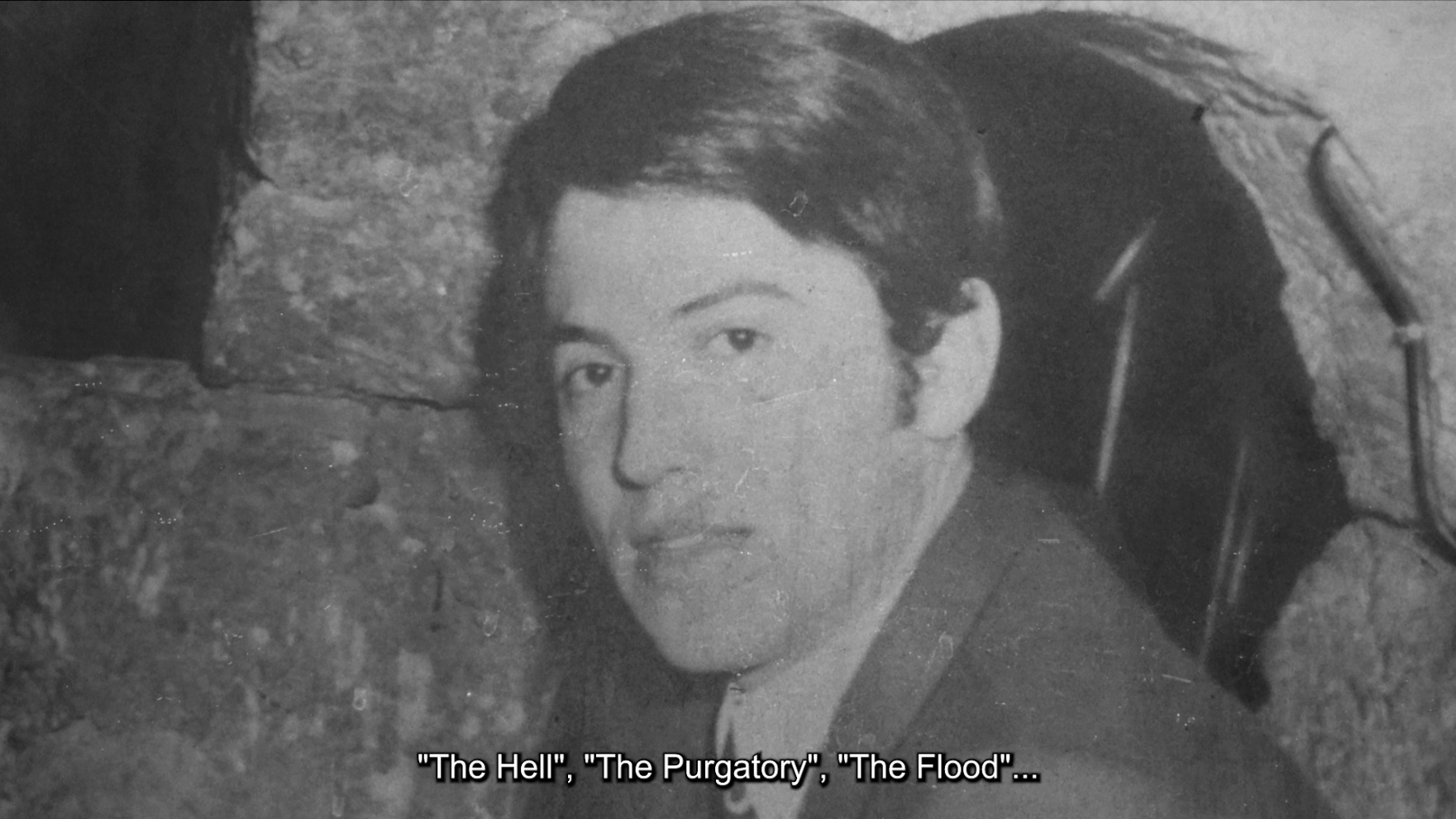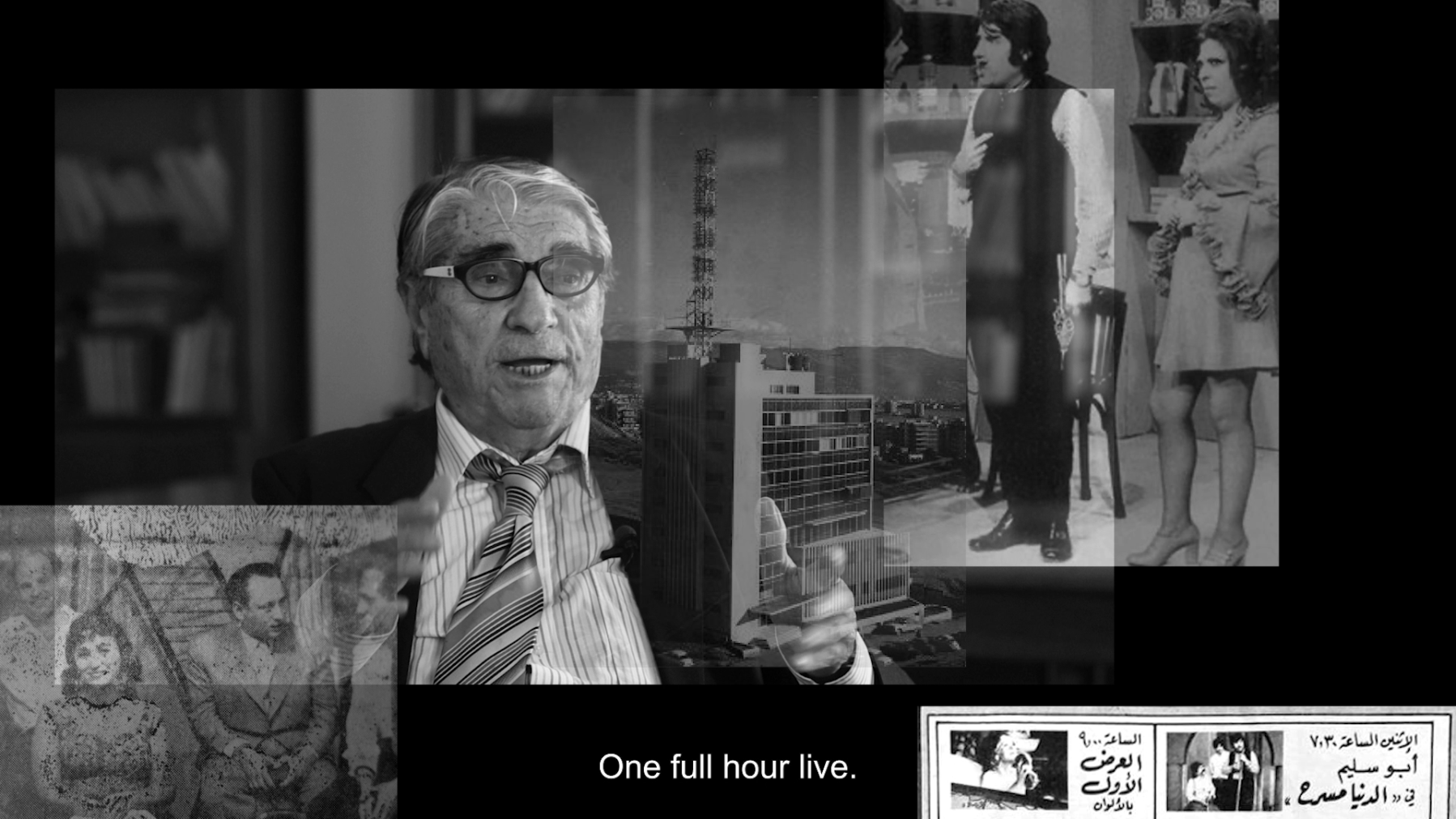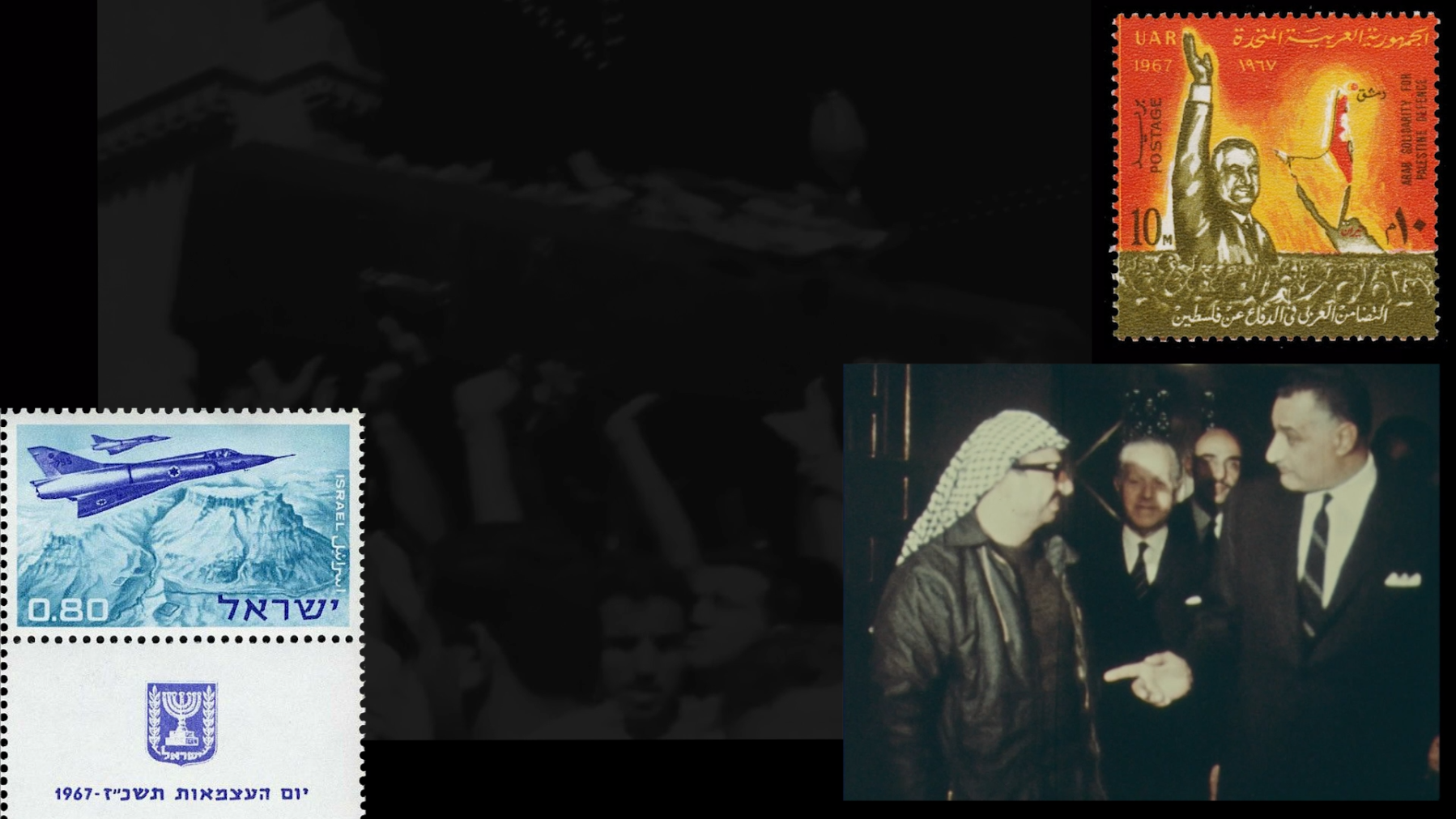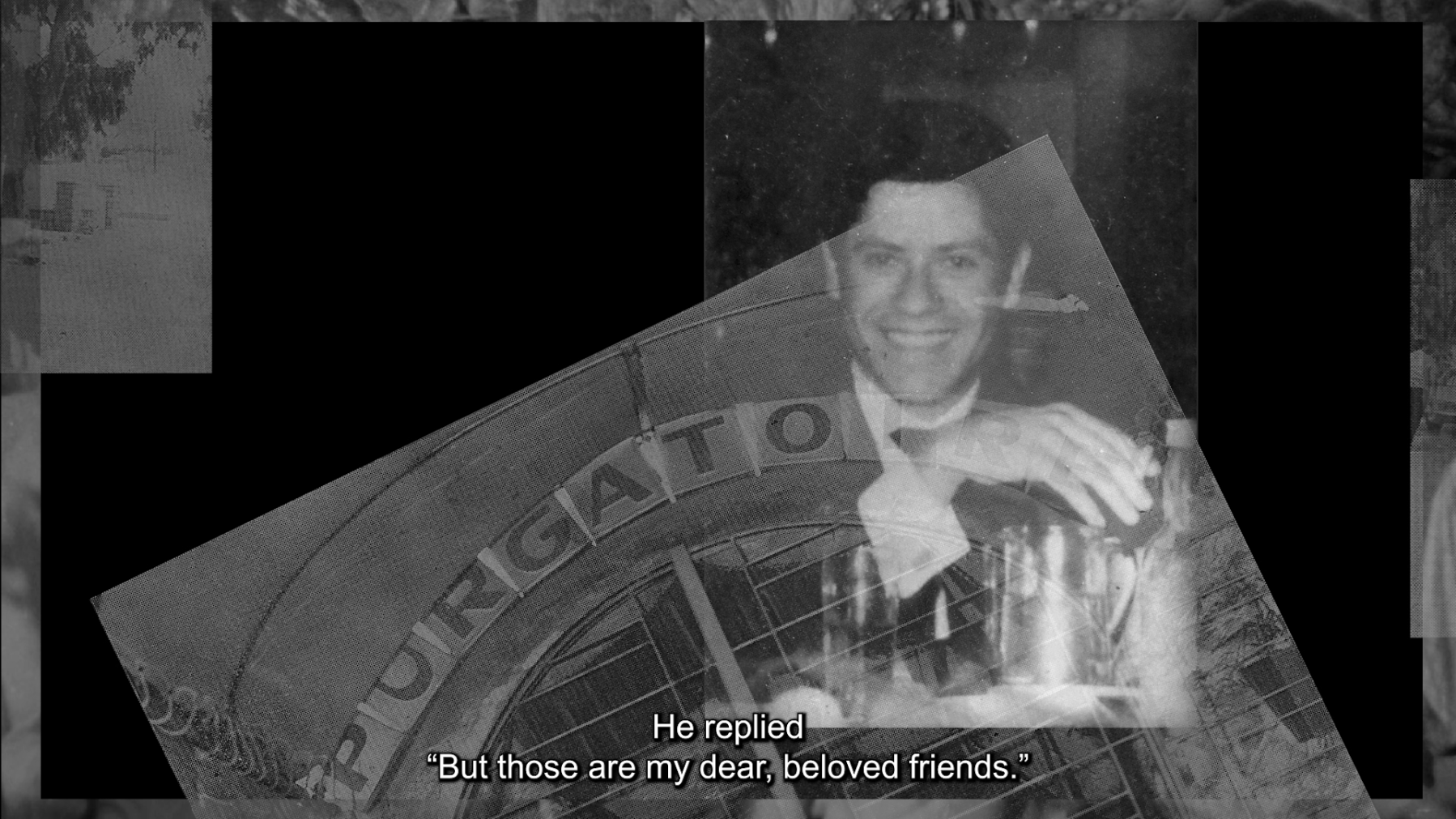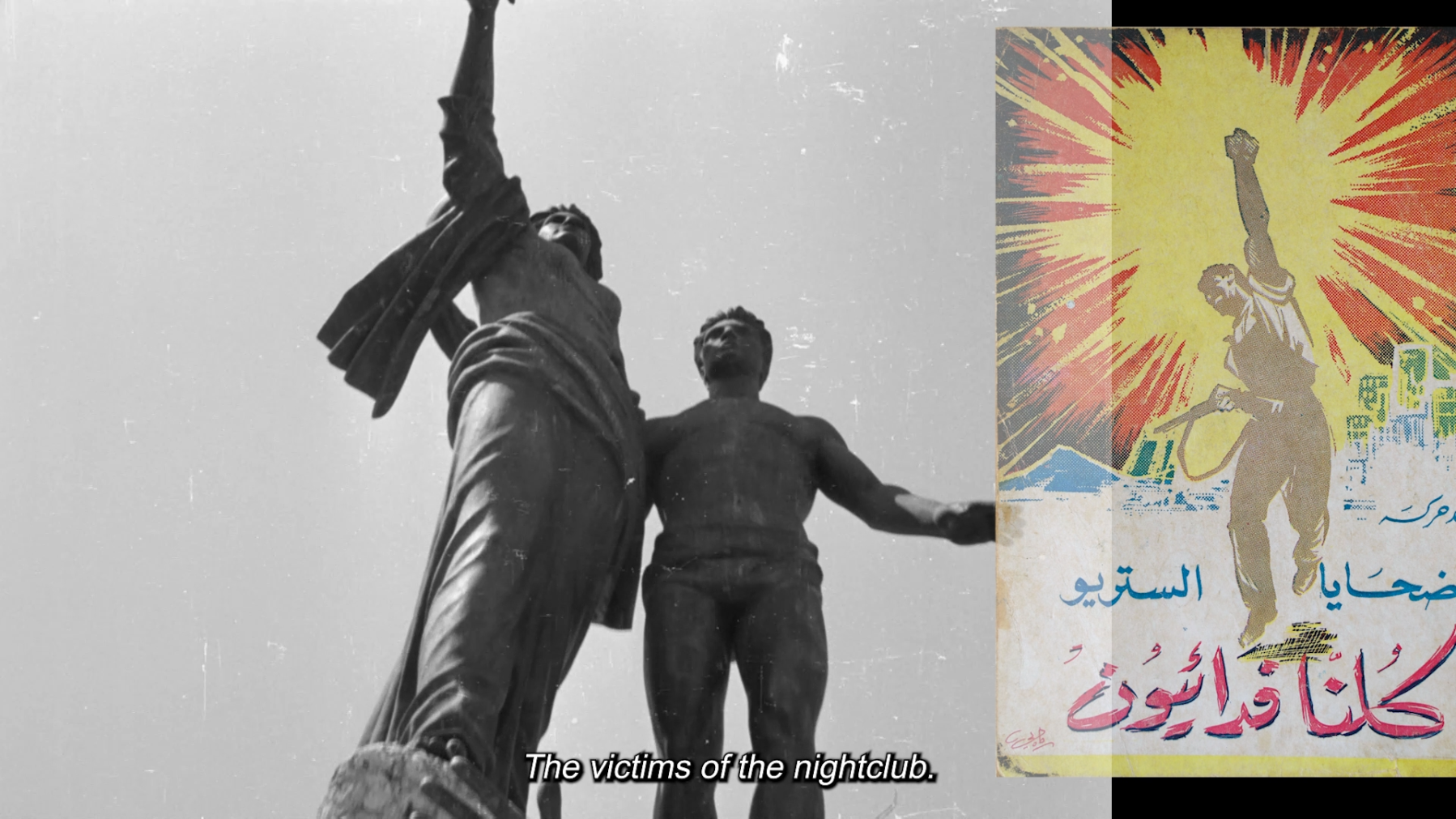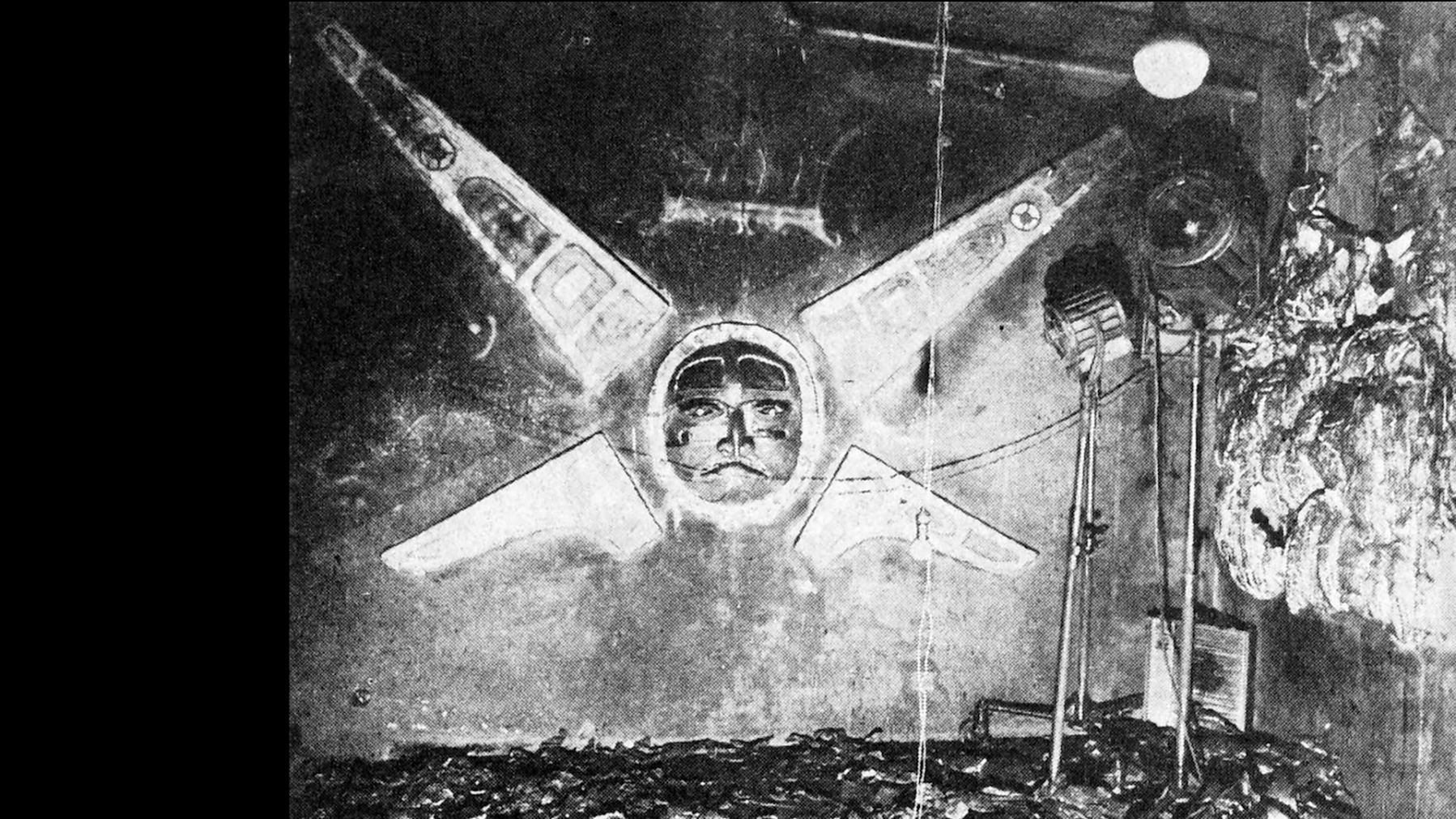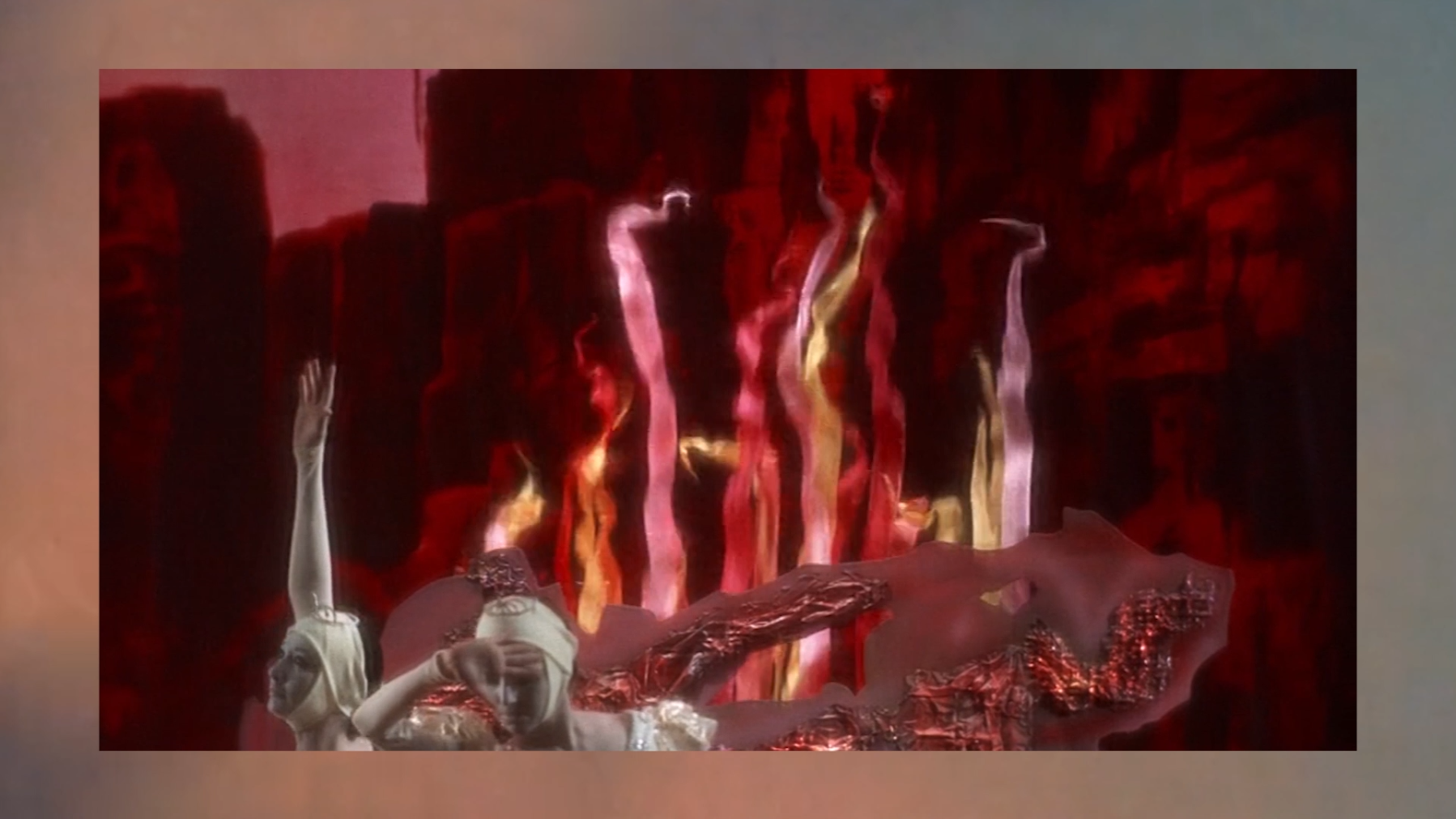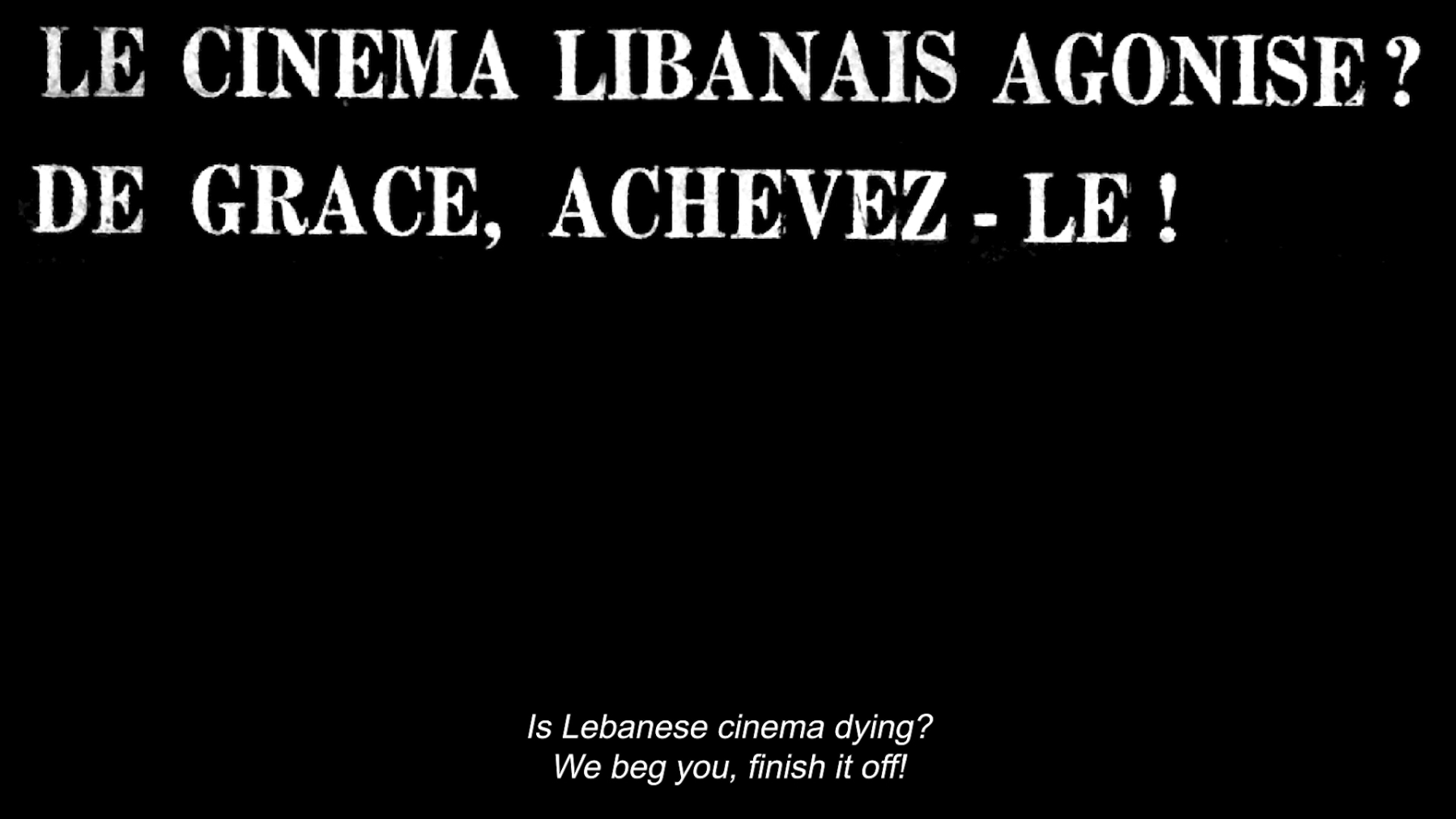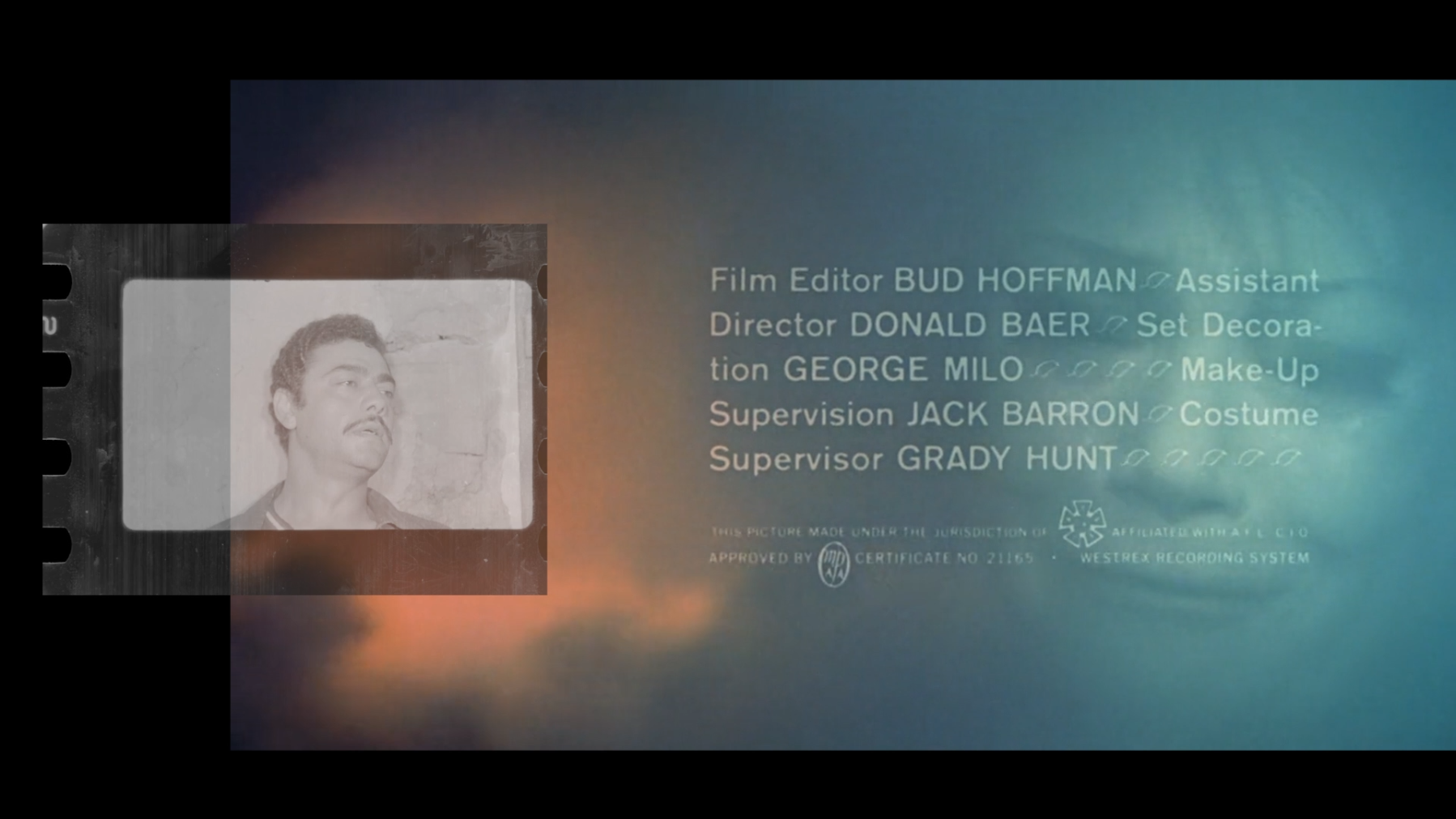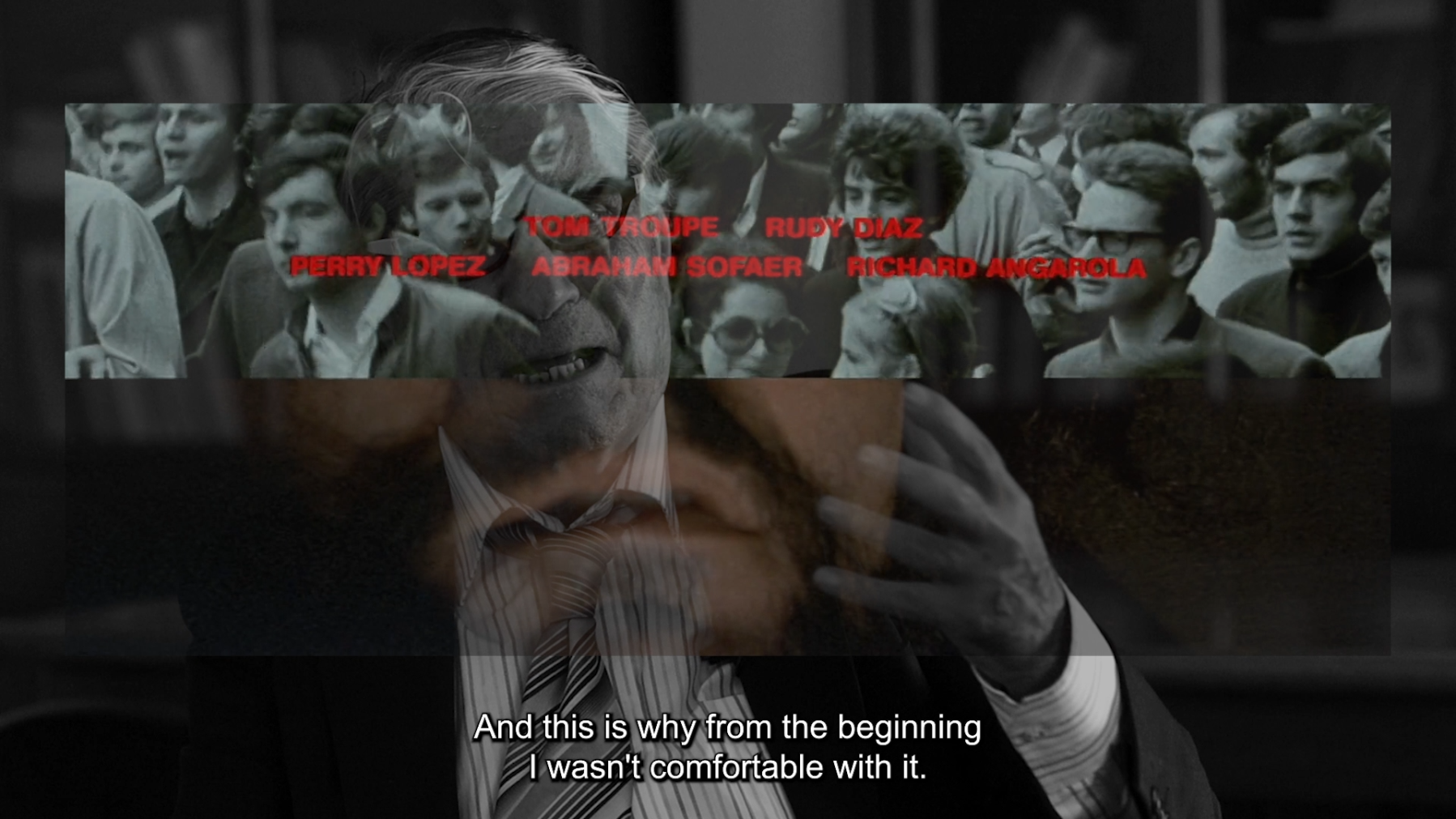-
Purgatoire (Cinema that kills)
Film, 61:44, 16:9, 2023.
With Samir Abu Saeed, Hussein Al Sayyed, Samir Chamas, Sami Ghosn, Mirvat Kousa, Christiane Mallouk, Salah Tizani.
Alexis Guillier’s film looks at a deadly fire that broke out at the Beirut nightclub "Purgatoire" on the set of the 1969 Lebanese movie Kolouna Feda'iyoun (We are all fedayeen) by Gary Garabedian, a take on Palestinian resistance at the time. Guillier’s project delves into the complexity of the film’s context, the precariousness of Lebanese cinema, and the investigation of the accident.
The narrative of the film is built through the stories of the main protagonists: Purgatoire’s owner Sami Ghosn, TV star and Gary Garabedian's good friend Salah Tizani (aka Abu Salim), actor Samir Abu Saeed, the last living actor to have appeared in the film and who was at Purgatoire the night of the accident, actor Samir Chamas, who played in the film and who arrived on the scene just after the accident, Mirvat Kousa, sister of the actress Mona Slim, who was seriously injured in the accident, Hussein Al Sayyed, special effects expert and Christiane Mallouk, sister of the extra Gaby Mallouk who died in the accident.
The film also testifies to the evolution of Alexis Guillier's image work, which is illustrated here through the increased exploration of visual associations, layered editing and opacity, which are also reflexive tools on the context, the story, and the narrative of the accident, and which nourish a play with certain formal codes of documentary.
Like many places in the world, 1968 was a crucial year in Lebanon. The impact of the Six-Day War and the victory of the Fedayeen in Karameh is very strong. The influence of Fatah and the PLO was also strong, and popular support for the fedayeen's actions seemed unwavering. This is the reason why the "freedom fighter" figure, ready to die for the Palestinian cause, has reached a quasi-mythical status at the time, especially thanks to the intense communication policy of Fatah and the PLO. The film Purgatoire explores this context and its direct links to the genesis and production of the film Kolouna Feda'iyoun.
Purgatoire is part of the larger project La réalité éclatée / A many splattered thing, conceived as an investigative history of cinema through set accidents that have caused deaths and severe injuries. The whole project is interested in the tensions between production and representation, material reality and image carried on the screen. In this respect, the exploration of the accident in Purgatoire is marked by these questions and inhabited by the revealing power of the accident. Through the words of the film's actors, the film weaves back and forth between the roles in the film, the moment of filming and an everyday space marked by the accident. The testimonies of the protagonists reveal these points of passage where the filmed fiction is contaminated by the political and economic context of the film (the extras who play the residents of Tel Aviv, the explosives which, according to the testimonies, are either flare candles or napalm bombs, the electricity problems in Lebanon) and where the material reality of the people is affected by the representations (the actor physically threatened because of his roles in the film and at the time, the burned bodies described through cinematographic references). The accident gave rise to strong statements about the economy of Lebanese cinema and the safety conditions of nightclubs, while the confused investigation mixed contradictory testimonies and conspiracy theories, finally leading to the indictment of two dead: Gary Garabedian and his director of production. In his cinematographic escapes, TV director Garabedian sought commercial success through thrillers (Garo) or action films (Kolouna Feda'iyoun, of the genre sometimes called mujaddarah westerns, an Arab equivalent of spaghetti westerns featuring the achievements of the fedayeen) under the influence of the European movements of the era, New Wave and neorealism.
Purgatoire is also a reflection on the word “purgatory”, not only what the so-named nightclub really seemed to become because of the accident, but also film as a place of purgatory, particularly through the fate of Koulouna Fida'iyoun, released in theaters and whose fateful dance scene was included in the Egyptian version. Finally, and in the words of investigative journalist Alia Ibrahim, who accompanied this project, Purgatoire is indeed about a "dance with reality".
Camera and sound: Fady El Nachme, editing: Théo Carrère, soundtrack and sound mixing: Voiski, interpreters: Roger Hélou - Youssef Salameh, production: Forecast.
Some film and archive materials used in "Purgatoire (Cinema that kills)" are part of the Baalbeck Studios collection and were kindly made available by UMAM Documentation and Research and digitized by Arsenal Institut für Film und Videokunst e.V.).
Other video archival material: AP, ART, British Pathé, Reuters, Sabbah Video Corp International, Télé Liban. Abboudi Bou Jawde archive, Bibliothèque Orientale - Université Saint-Joseph de Beyrouth, The Palestine Poster Archives.
Other archive and photo credits: Aimée Thirion, Alf Leila W Leila, Al Mawed, Al Mulhak, Al Shabaka, Le Jour, Kul Shai, L'Orient, Revue du Liban, personal archives of Sami Ghosn, Mirvat Kousa, Christiane Mallouk and Salah Tizani.
Special thanks to Alia Ibrahim, Forecast, radialsystem, Daraj, UMAM D&R, Syndicate of Lebanese Actors and Actresses and their teams. Najib Aboukhaled, Samir Abu Saeed, Hussein Al Sayyed, Bachir Al Ajam, Saleh Al Ajam, Neemeh Badawi, Nigol Bezjian, Abboudi Baw Jawde, Georges Boustany, Gregory Buchakjian, Emile Chahine, Samir Chamas, Rabih Damaj, Sami Ghosn, Nabil Haddad, Mario Haddad Sr., Mazen Haidar, Roger Hélou, Ghassan Koteit, Mirvat Kousa, Christiane Mallouk, Laurence Mazaud, Ghada Sayegh, Mohamed Soueid, Alfred Tarazi, Salah Tizani, Giovanni Vimercati, Hady Zaccak. Céline Poulin and Vernon Guillier Poulin.
© Alexis Guillier 2023
Trailer/Intro:
